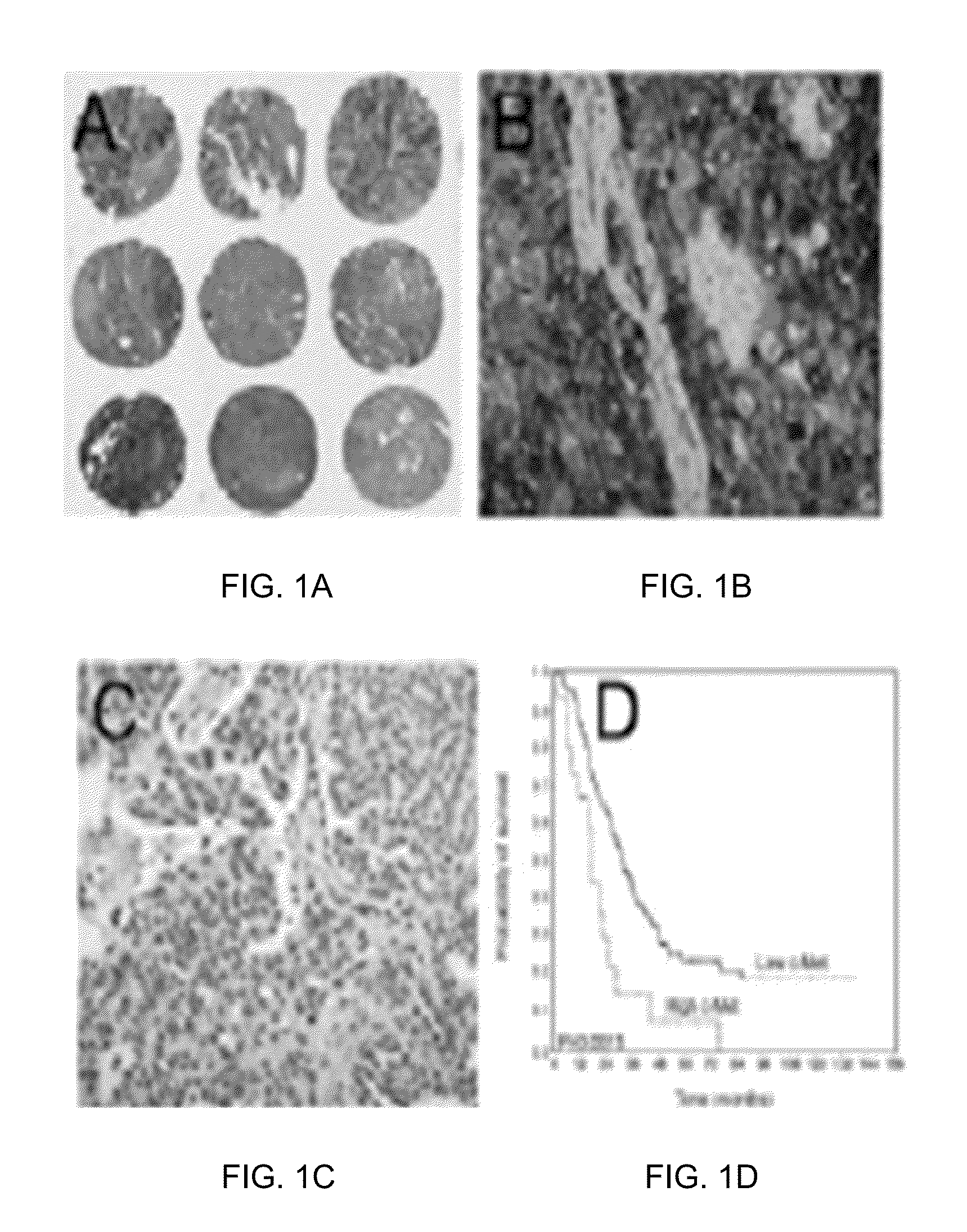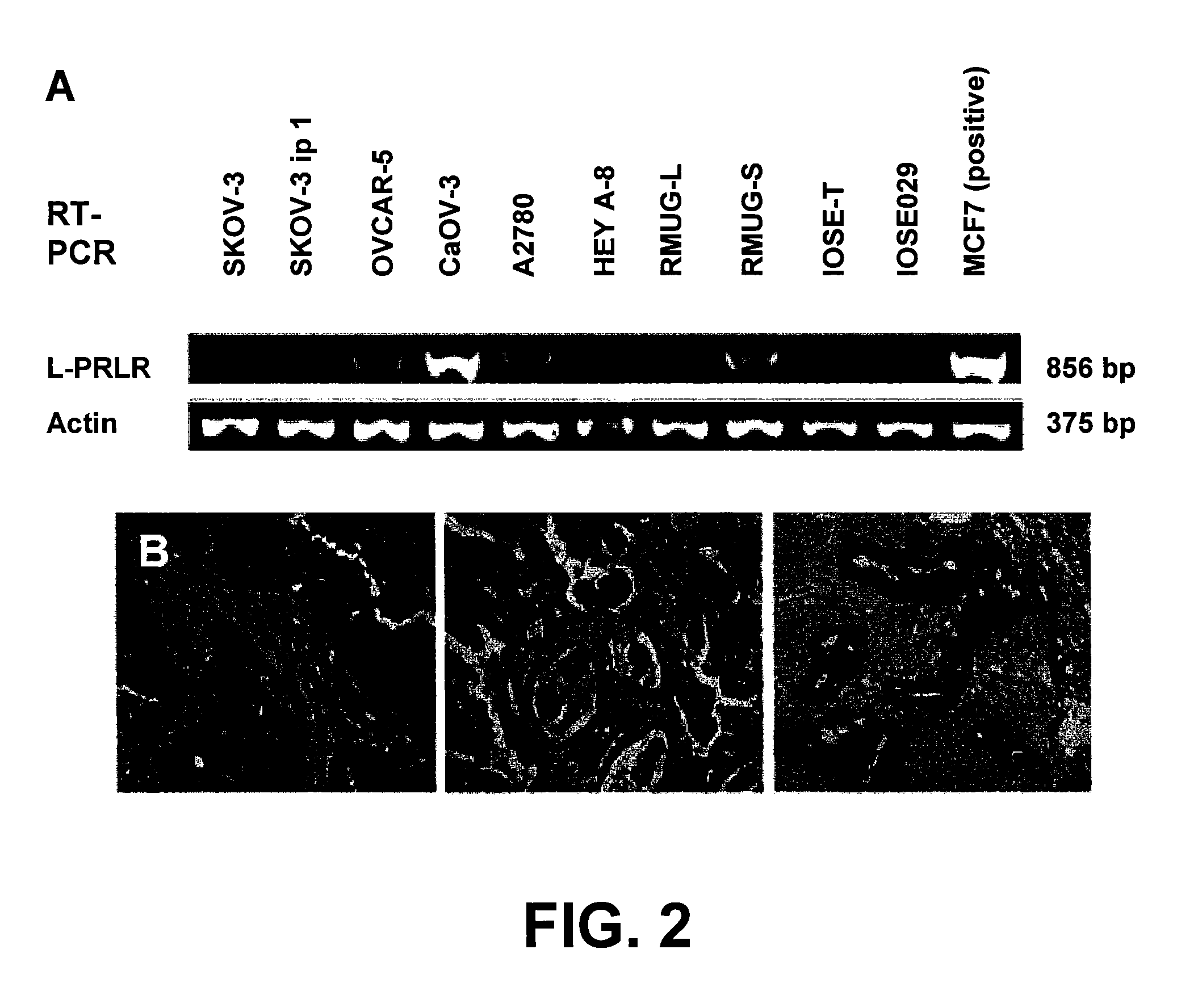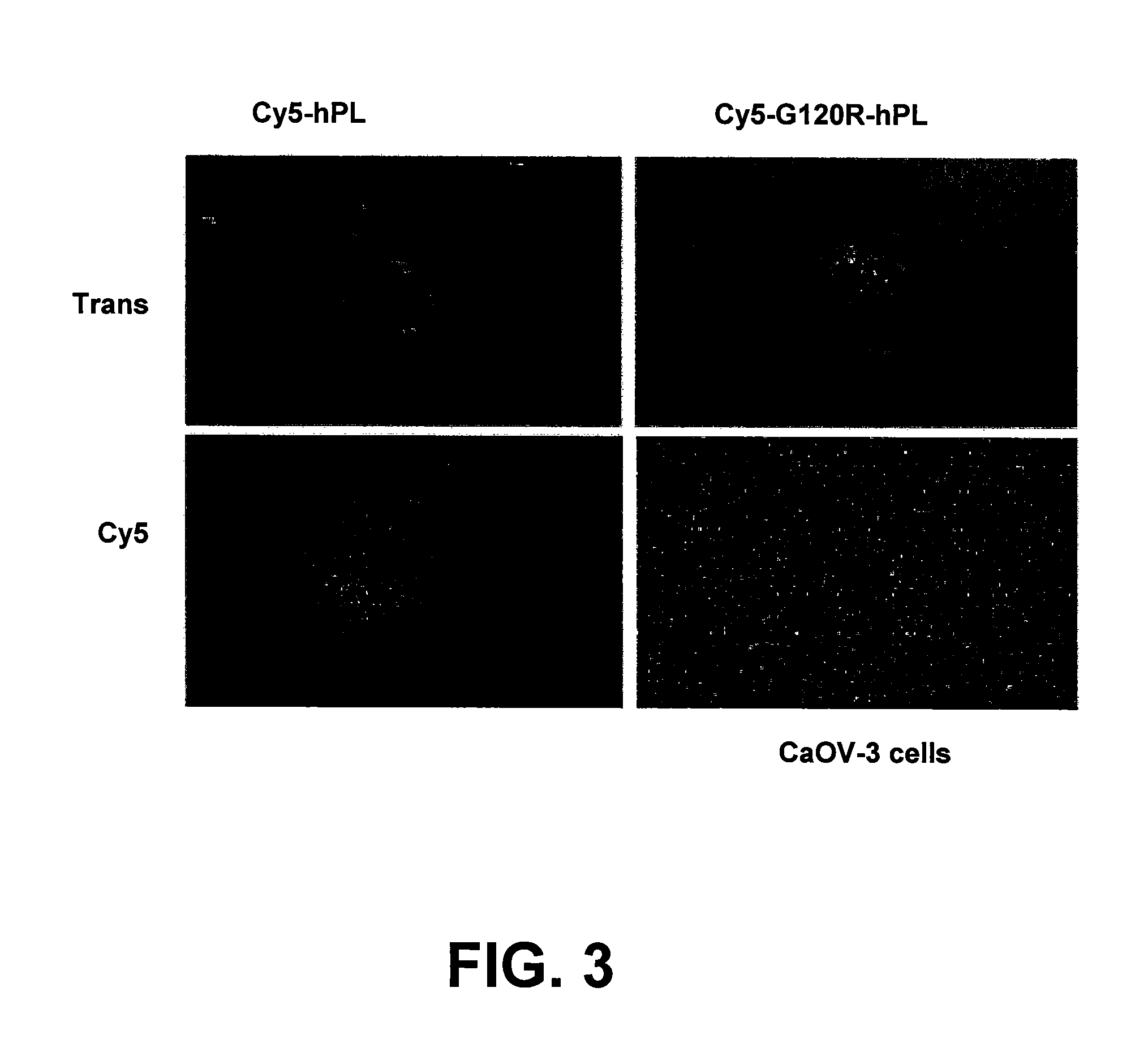Receptor-mediated delivery: compositions and methods
a technology of receptors and molecules, applied in the field of receptor-mediated delivery, can solve the problems of lack of efficient delivery systems, lack of sustained expression and host immune reactions, and hampered the translation of research initiatives to clinical applications, etc., and achieve the effect of inhibiting expression and raising markers
- Summary
- Abstract
- Description
- Claims
- Application Information
AI Technical Summary
Benefits of technology
Problems solved by technology
Method used
Image
Examples
example 1
Characterization of c-Met Expression in Ovarian Cancer Cell Lines
[0064]Expression of c-Met was characterized in ovarian cancer samples by immunohistochemistry and immunofluorescence.
[0065]Tissue blocks from 161 patients with FIGO stage III / IV advanced ovarian or peritoneal cancer who had undergone tumor debulking by a Gynecologic Oncologist at the Section of Gynecologic Oncology at the University of Chicago between 1994-2004 were selected for the study after IRB approval was obtained. Samples of tissue sections from the primary tumors were stained with hemotoxylin and eosin (H&E) and a pathologist outlined the areas to be punched. 1.5 mm cores of tissue were punched from donor blocks and inserted into a recipient block. The tissue micro array (TMA) was cut in 5 μm sections and stained with H&E to confirm the presence of tumor. Satisfactory immunohistochemical staining of c-Met was obtained in 138 patients. A detailed Microsoft Access database (Version 2003-SP2) was designed and demo...
example 2
Characterization of hPRL Receptor Expression in Ovarian and Breast Cancer Cell Lines
[0069]To validate the human prolactin receptor (hPRLR) as a target receptor in ovarian cancer, we characterized its expression in ovarian cancer cell lines, a breast cancer cell line and ovarian cancer tissue. Quantitative real time (RT)-PCR analysis was used to determine expression of hPRLR with a PRLR Taq Man probe. As shown in FIG. 2A, 8 out of 10 ovarian cell lines, as well as the breast cancer cell line MCF-7, express hPRLR mRNA.
[0070]Human prolactin receptor was also detected by immunohistochemistry using an anti-hPRLR monoclonal antibody. Slides were reviewed manually by two independent pathologists. Immunoscoring was done as described in Example 1 using the Automated Cellular Imaging System, ACIS (Clarient, Calif.). 80% of ovarian cancer cell lines expressed the hPRLR protein. (Representative stainings shown in FIG. 2B). As shown in FIG. 2B, the hPRLR is localized both in the cytoplasm and in...
example 3
Internalization of a c-Met siRNA Conjugated to FITC in CaOV3 Cells
[0071]CaOV-3 cells were plated and treated with a Cy5-conjugated hPL or a Cy-5-conjugated hPL mutant (G120R). Internalization of the conjugates was examined using confocal microscopy. As shown in FIG. 3, the hPL conjugate was internalized, but the mutated form, which cannot bind the dimerized hPRLR, was not internalized.
PUM
| Property | Measurement | Unit |
|---|---|---|
| concentration | aaaaa | aaaaa |
| pH | aaaaa | aaaaa |
| pH | aaaaa | aaaaa |
Abstract
Description
Claims
Application Information
 Login to View More
Login to View More - R&D
- Intellectual Property
- Life Sciences
- Materials
- Tech Scout
- Unparalleled Data Quality
- Higher Quality Content
- 60% Fewer Hallucinations
Browse by: Latest US Patents, China's latest patents, Technical Efficacy Thesaurus, Application Domain, Technology Topic, Popular Technical Reports.
© 2025 PatSnap. All rights reserved.Legal|Privacy policy|Modern Slavery Act Transparency Statement|Sitemap|About US| Contact US: help@patsnap.com



